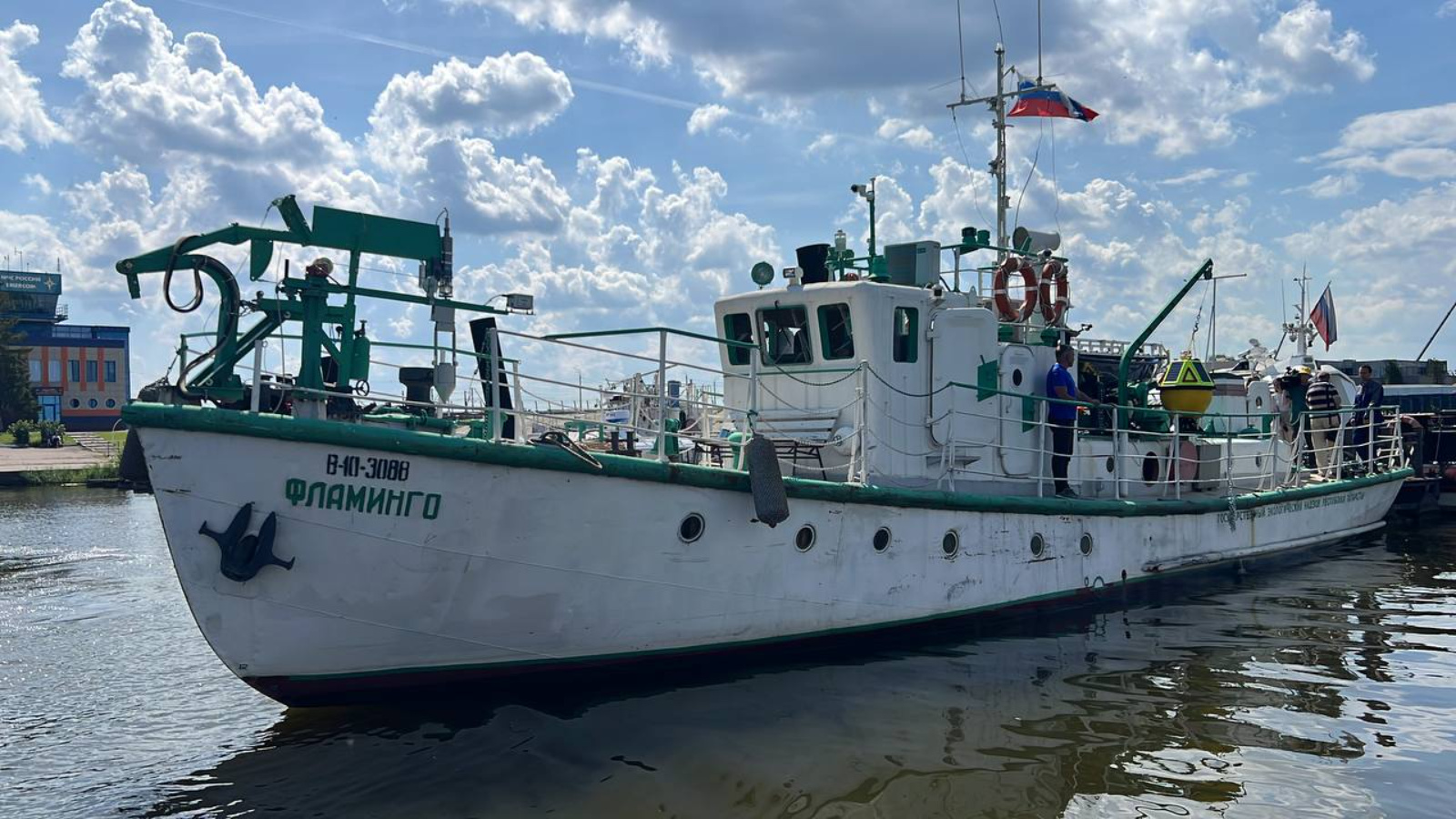The journalists were presented with a new domestic development for monitoring the aquatic environment, Aquatorium

Today, the Ministry of Ecology and Natural Resources of the Republic of Tatarstan organized a press tour for media representatives in honor of the launch of the annual scientific research expedition on the scientific vessel Flamingo. This year, the expedition is being conducted by the combined forces of specialists from the Ministry of Ecology, GBU NPO Geocenter of the Republic of Tatarstan and scientists from the Tatar branch of the Scientific Research Center of the Russian Federation VNIRO.
Olga Manidicheva, Deputy Minister of Ecology, noted the specifics of this year's expedition:
"We will monitor all the points that are approved by the program of the Academy of Sciences of the Republic of Tatarstan. This year, specialists from the Tatarstan VNIRO joined our expedition and we will conduct a joint study at three points in order to study the state of the aquatic environment of the Kuibyshev reservoir in more depth. We carry out all the research in support of the national Environmental Well-Being project," the speaker said.
She also spoke in detail about the research methodology: "Research will take place along the entire route. The equipment automatically measures 8 hydrochemical and 8 hydrophysical parameters. At the six points approved by the monitoring program, we will take samples separately and examine them in the laboratory on shore. This is another component of our scientific expedition."
The four-day expedition route will cover the key water areas of the Kuibyshev reservoir: from Kazan to the mouth of the Ilet River, the mouth of the Sviyagi River, the settlement of Kzyl Bayrak, the village of Kamskoye Ustye, the water area of the Saralinsky section of the Volga-Kama State Natural Biosphere Reserve and back to Kazan. In total, about 360 kilometers will be covered.
Mars Valiev, Director of GBU NPO Geocenter RT, shared the technical capabilities of the Flamingo vessel:
"The Flamingo research vessel has undergone a complete modernization. In 2022, the vessel, thanks to the support of the Head of the Republic of Tatarstan Rustam Nurgalievich Minnikhanov, was retrofitted with all the necessary equipment for the study. Hydrophysical and hydrochemical indicators, a weather station, echolocation, and ultrasonic sensing are presented on the vessel. It was used to monitor the water area of water bodies during the Russia–Islamic World: KazanForum forum and the BRICS summit.
As explained by Mikhail Gorshkov, Head of the Laboratory of Aquaculture of Tatarstan National Research University, the Flamingo vessel will help VNIRO specialists to study more deeply the processes taking place in the water area of the Kuibyshev reservoir in terms of biological resources.
"When the analysis is carried out, we will have detailed information about the processes taking place in the aquatic environment. It is important that hydrobiologists, zoologists, biologists, chemists and other specialists work together and are provided with good equipment. The Ministry of Ecology pays special attention to working with science and always looks ahead. Such a close look into the future allows us to manage the processes that occur in the aquatic environment," said the head of the aquaculture laboratory.
Of particular interest to journalists was the demonstration of the latest Russian development, the Aquatorium environmental monitoring platform. Alexey Bulygin, CEO of NAECO, the developer of the platform, presented a new domestic system designed for long–term monitoring of surface water quality. "By order of the Ministry of Ecology of the Republic of Tatarstan, this year we will install this equipment in Tatarstan in a pilot mode. The platform runs on domestic software and is installed at a specific point. All data will be automatically transmitted to the central point for a detailed analysis of the parameters."
The Aquatorium platform has a number of innovative features: rapid monitoring of changes in the characteristics of the aquatic environment at the location of the navigation buoy, measurements of hydrological and hydrophysical characteristics, determination of turbidity. Among the key features of the platform are automatic monitoring, autonomous operation (long-term maintenance-free operation), modular design and remote data transfer to the user.
Visually, the platform is a buoy with solar panels, which ensures its energy independence and environmental friendliness. The equipment can be used for monitoring rivers, lakes and reservoirs, which is especially important for operational water quality control and timely detection of pollution.
The journalists had the opportunity to get directly acquainted with the equipment of the scientific vessel, ask questions to specialists and take unique photographs of modern environmental monitoring equipment. The expedition will become an important stage in the continuation of observations of the state of Tatarstan's water bodies and will provide new data on the state of the ecosystem of the Kuibyshev reservoir.